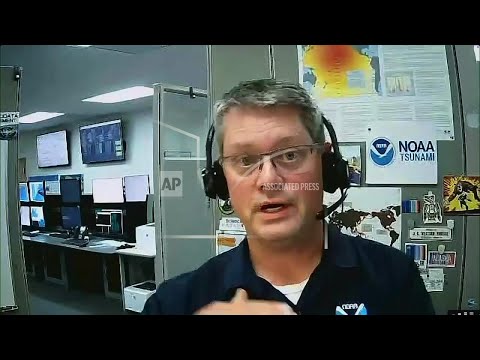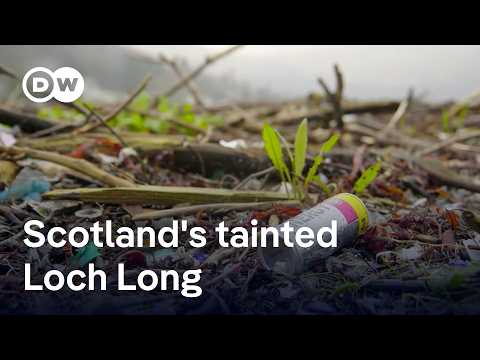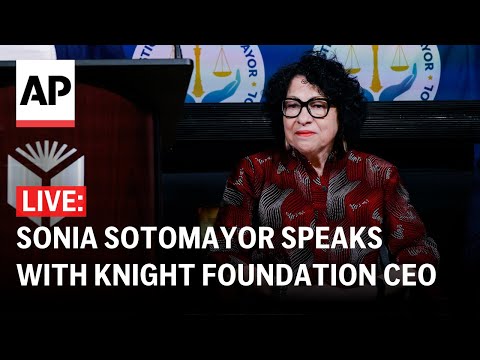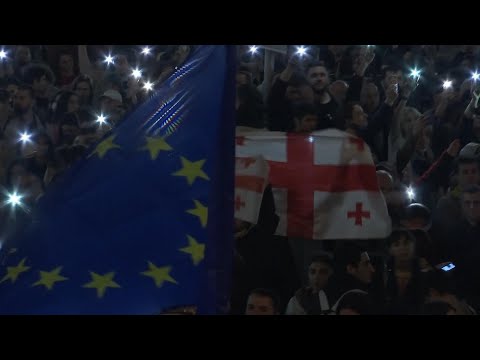(30 Jul 2025)
RESTRICTION SUMMARY:
ASSOCIATED PRESS
Palmer, Alaska – 29 July 2025
1. SOUNDBITE (English) Dave Snider, Tsunami Warning Coordinator, National Tsunami Warning Center:
"The most important thing to understand about tsunamis is: this is not a surf wave, it’s not a wind wave. A tsunami is the entire ocean column that has been lifted up above that high tide level there because of that extreme movement of the Earth’s crust with the earthquake there. So this is a significant planetary event we have just witnessed. And when you have a wind wave or a surf wave you think of that at the beach and that nice gentle sound there of the coast, this isn’t what this is. This is an ocean flood."
++BLACK FRAMES++
2. SOUNDBITE (English) Dave Snider, Tsunami Warning Coordinator, National Tsunami Warning Center:
"We’re talking about that water coming up onto dry land above, that mean high tide line and moving into dry places where it’s normally not wet. So really big difference. I think of this more as an ocean flood. Storm surges would be another way to think about this with a hurricane or a tropical event, but it’s not a wind or surf wave. It’s not something that’s just going to gently lap at your shore and then go away."
++BLACK FRAMES++
3. SOUNDBITE (English) Dave Snider, Tsunami Warning Coordinator, National Tsunami Warning Center:
"What we would expect to see is probably that higher level of inundation possibility, those waves coming in. And over time, we’ll see that level drop down. When we subtract the tide from that, we’re gonna watch that level gradually recede over the course of several hours. And after about three hours of that, not reaching the advisory status or about one third of a foot or so, about 30 centimetres, once we don’t see that for three hours, we’ll drop our warnings there. But you’ll see the alert drop first from warning to advisory. And then after that three hour mark, we’ll it from advisory to a green status. We’re not going to say all clear because remember that 15 hour duration, that’s a long time."
++ BLACK FRAMES++
4. SOUNDBITE (English) Dave Snider, Tsunami Warning Coordinator, National Tsunami Warning Center:
"They see these waves sit there in the harbours and ring for a long-time, days later sometimes after a significant event like this. Wouldn’t be surprised to see that in other locations this time."
++BLACK FRAMES++
5. SOUNDBITE (English) Dave Snider, Tsunami Warning Coordinator, National Tsunami Warning Center:
"US West Coast, including parts of British Columbia and all the way down to the California-Mexico border, are under a tsunami advisory tonight. They’re not looking for dry places to get wet. But we are expecting some impacts there across the bay shores and harbours."
++ENDS ON SOUNDBITE++
STORYLINE:
One of the strongest earthquakes ever recorded struck off Russia’s sparsely populated Far East early Wednesday, sending tsunami waves into Japan, Hawaii and the U.S. West Coast.
Several people were injured, but none gravely, and no major damage has been reported so far.
Dave Snider, tsunami warning coordinator with the National Tsunami Warning Center in Alaska, said a tsunami was like "an ocean flood."
"This is not a surf wave, it’s not a wind wave. A tsunami is the entire ocean column that has been lifted up above that high tide level there because of that extreme movement of the Earth’s crust with the earthquake," said Snider.
Snider said the impact of the tsunami could last for hours or perhaps more than a day.
But the danger already appeared to be lessening, with Hawaii and parts of Japan downgrading their warnings.
Find out more about AP Archive: http://www.aparchive.com/HowWeWork
Twitter: https://twitter.com/AP_Archive
Facebook: https://www.facebook.com/APArchives
Instagram: https://www.instagram.com/APNews/
You can license this story through AP Archive: http://www.aparchive.com/metadata/youtube/11f982e2107b43c08fb0624d7f971ab6
Author: AP Archive
Go to Source
News post in August 4, 2025, 6:05 am.
Visit Our Sponsor’s:
News Post In – News





